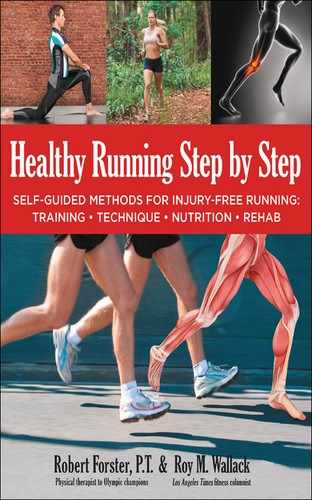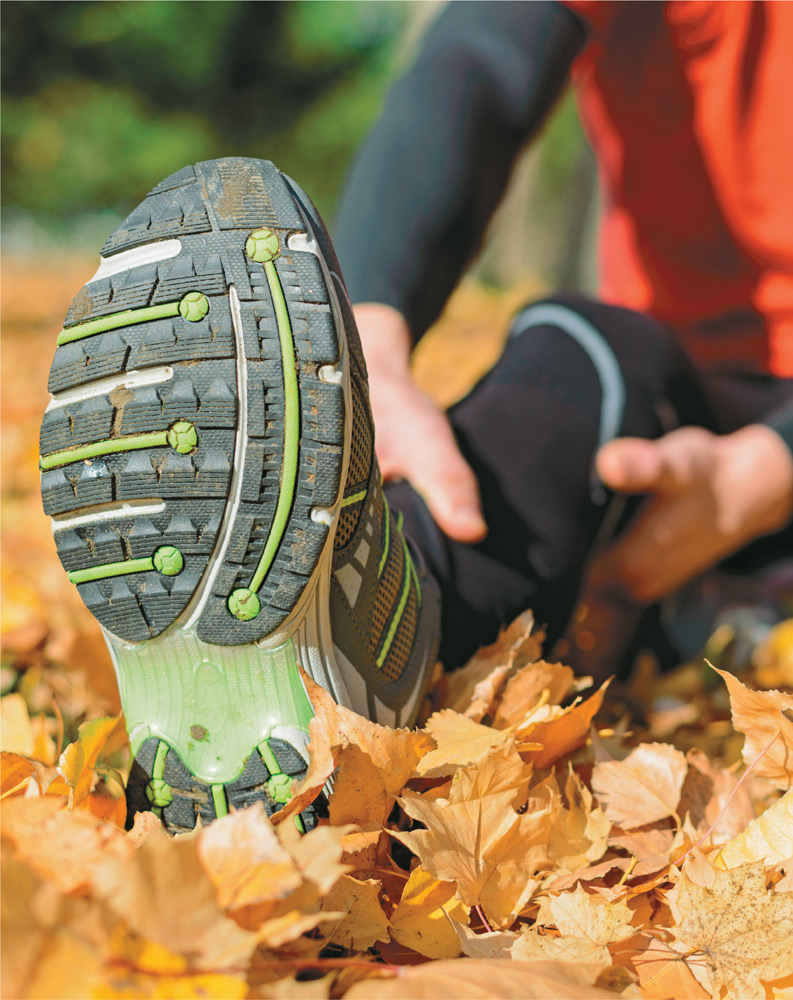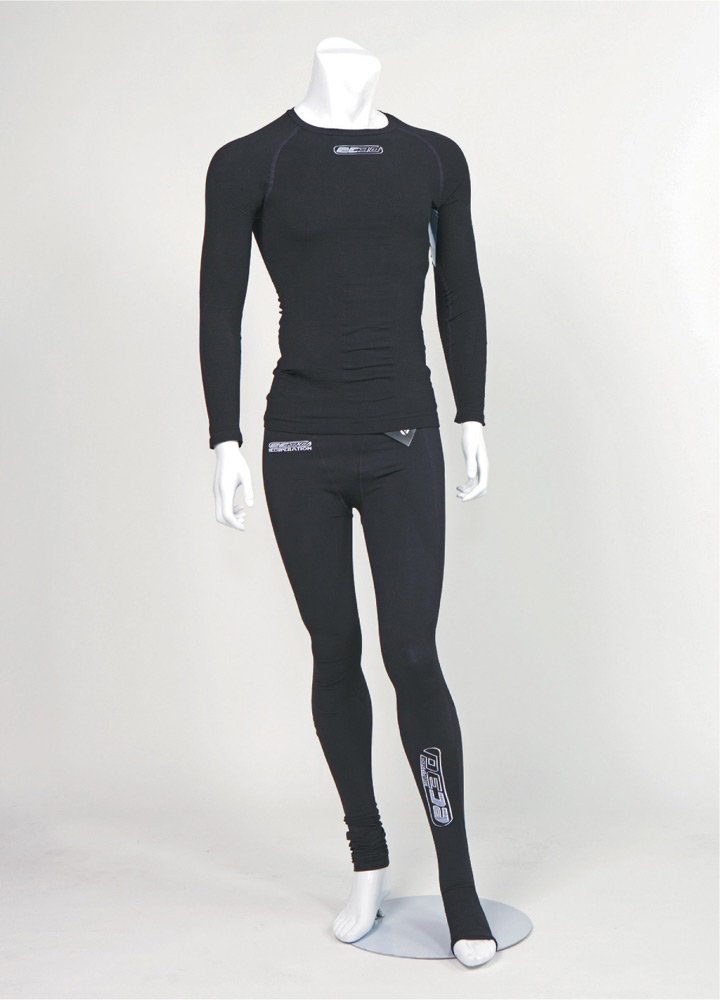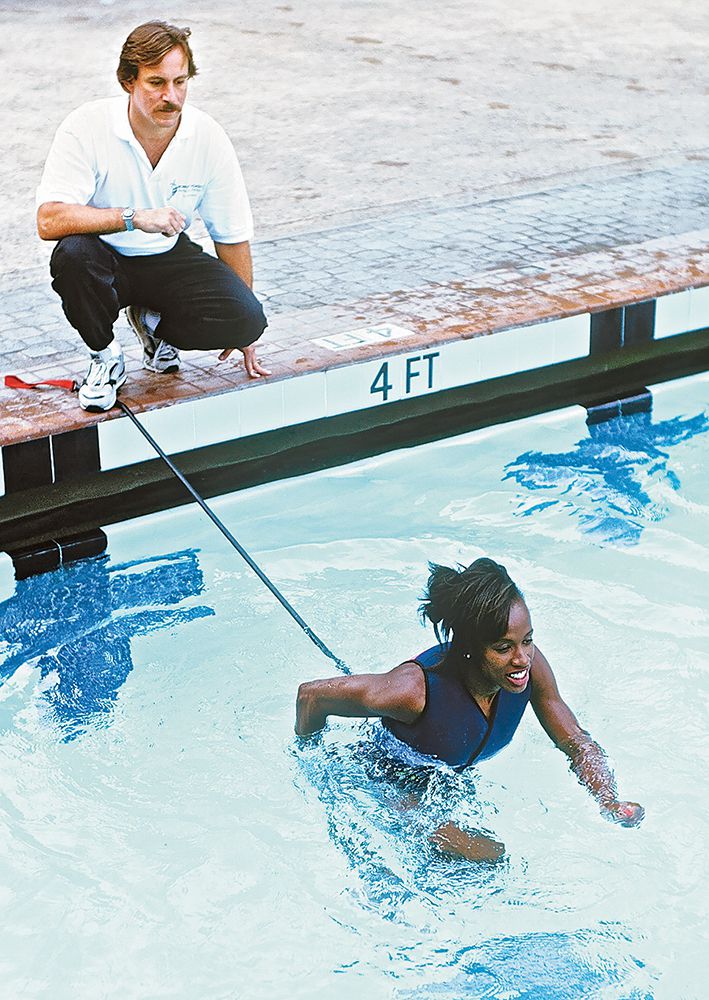3 The Science of Recovery
Recovery, which is the foundation of the Four Pillars in the House of Health and Performance, is the missing link of training. Do it and your health and performance improve. Don’t do it and you risk a host of overtraining problems such as sickness, injuries, a bad attitude, and poor results.
You’re feeling a little lethargic. Unmotivated. Fatigued. Sometimes you’re tired enough to fall asleep at the drop of a hat, yet unable to sleep after you wake up in the middle of the night. True, you’ve lost weight, added muscle, and increased speed because of your workouts—but lately you’ve been a little apathetic, not looking forward to them, maybe even starting to get more colds and injuries here and there. So what’s the problem—aren’t you doing the work?
Well, maybe the problem is that you’re doing too much work—or too much of the same work. Either way, you are overtrained, and why that has happened is because you are probably shorting yourself on recovery.
Recovery is the great missing link in most training plans. Eastern European training guru Tudor Bompa famously said, “Recovery should be so well understood and actively enhanced that it becomes a fixed component of your training.” That’s because recovery is the crucial low-intensity time that your body needs to heal and rebuild itself so that it comes back stronger, more efficient than before. On the macro level, recovery includes taking it easy the days after hard workouts and taking one day off altogether every week; on the micro level, it includes paying more attention to your cooldown, stretching, and post-workout nutrition and hydration. Honor the recovery day—it’s when the benefits of your hard training are realized.
There are several ways that you can short yourself on recovery and become overtrained. You might have rushed your base training so your body is overstressed from a too-compressed Periodization schedule that didn’t give it time to gradually adapt. Or maybe you haven’t varied your training stimulus, week after week doing the same semi-hard runs, the same distance, the same hills, so not only is your body getting stale and not improving, it is always functioning with a low level of fatigue from lack of rest.
Your workouts become less productive because fatigued muscles start each workout underfueled (that is, short on glycogen, which is what carbohydrates become when stored in the muscles and liver for use as energy). Thus, you can’t produce the intensity needed in your next workout to build your fitness, yet you are not going easy enough to allow for recovery. In this manner, all your workouts become skewed to mediocrity—never going easy enough to recover and not having the energy to work hard enough to improve. Also, when you train with chronic fatigue from going too hard all the time, you cannot maintain proper running mechanics, and as mechanics break down, the risk of injury increases.
Additionally, an underrecovered body builds up too much cortisol, which is a stress hormone that makes your body store fat and water and slows down your metabolism—the opposite of your training goals. In short, depriving yourself of recovery means that you’re doing all the work but getting rewarded with poor results, injuries, and sickness.
“Working hard is easy—everyone knows how to work hard. But those who know how to work hard at recovery are the ones who win,” says my friend and mentor, coach Bob Kersee, the most successful track and field coach of all time. Fact: Athletes by nature know how to push it, but the ones who know when to throttle back perform the best. Therefore, to make sure you recover, don’t leave it to chance. Program recovery into your workout schedule and rigorously observe it.
The Big Three Recovery Killers
Overtraining syndrome and lack of recovery are two sides of the same coin, and unfortunately, the rule rather than the exception. Avoid them by guarding against slipping into these three bad training habits:
• Falling into a Rut. Beware of doing the same thing, such as running your standard 6-mile (9.6-km) loop, every day, over and over. Your body adapts to the stress of a particular workout to the point where it is hardly stressful anymore. As a result, your workouts will no longer elicit a strong hormonal response. Instead, your hormones just say “ho-hum” and fade. To keep improving, you need to keep changing the stress every 8 weeks per the Periodization schedule outlined in chapter 4.
• Doing Too Much Too Soon. Although your breathing and organs—heart and lungs—adapt rapidly to the stress of increased exercise, your infrastructure—bones, joints, and muscles—do not. So you need the discipline to keep from going as fast as your breathing will let you; otherwise, your body’s infrastructure won’t be able to deal with the stress. In Periodization terms, you don’t want to rush the base-building phase. Don’t do any hard workouts—such as intervals or hills—on a too-shallow base.
• Going Too Hard All the Time. Some people never stop, never give themselves recovery time, and it eventually comes back to hurt them. Too much intensity—hard running, biking, skiing, you name it, sometimes on the same day—will negatively impact your health. Do not violate the hard-easy paradigm of Periodization.
The Ten Commandments of Recovery and Preventing Overtraining
To understand the importance of recovery, the risks of overtraining, and the strategy for getting the most out of your training, approach recovery as a science. Do it by following these ten steps:
1. Remember the Supercompensation Principle of Progressive Overload.
The foundation of all successful training is supercompensation, a principle in which increasing stress triggers an adaptive response that strengthens the body’s physiological systems. Following hard work, you at first feel fatigued and suffer an initial decrease in performance; then, with recovery, the body becomes stronger and more efficient. We can’t overemphasize the point that these improvements occur only if time for recovery is provided.
Periodization training is a stepchild of recovery, born out of the need to avoid mental and physical burnout and achieve peak performance when it counts most. A well-designed Periodization program manipulates intensity (how hard you train and the volume, i.e., the total number of miles or hours you train each week), manipulating them to create the right amount of stress on the body.
As mentioned, endurance athletes’ big problem often is that their structural system (foundational infrastructure such as tendons, bone, and fascia) can’t handle the high training load necessary to take them to their peak. Additionally, the metabolic system can be overtaxed and weakened with an inappropriate balance of stress and recovery.
2. Honor Your Base Training.
Remember that low-intensity, early-season base training is when you build your metabolic and structural foundation that will support the harder training efforts later in the season. A good example is vascularization, which is essentially the increased formation of blood vessels. Improved vascularization is only stimulated by low-intensity workouts and aids recovery by ensuring the presence of blood vessels close to each working muscle cell, thereby providing a quick exchange of waste products and oxygen and nutrients with the muscles.
Other examples of foundational structures enhanced by base building include your skeleton, joints, and muscles, all of which help maintain form and economy of motion as you run, translating to fewer injuries and easier, faster recovery. It’s the same story with the enhanced fat-burning metabolism you develop during base training; a lower production of lactic acid and waste products along with a lessened reliance on carbohydrates as fuel makes bonking, or hitting a wall, and cannibalizing muscle less likely, again allowing for a faster recovery.
Need I say it again? Better recovery today translates to the ability to work harder tomorrow.
3. Alternate Hard and Easy Workouts and Build in Rest Periods. Use Light Workouts for an Active Recovery.
A hard workout can be a long workout or a high-intensity workout; it stimulates the adaptations that make you stronger, but those gains actually occur on the easy, active-recovery day that follows. Similarly, your training program must have built-in recovery weeks following every 2 to 3 weeks of building intensity. At the end of your yearly training cycle, you need 3 to 6 weeks of chill time to allow complete system recovery.
Active recovery is better than rest alone. There is nothing passive about recovery. Yes, you can get some recovery by sitting on the couch and eating Cheetos the day after a hard workout. But the best recovery is an active process in which light “adaptation” workouts, such as an easy-paced run, swim, bicycle ride, or even walk, stimulate recovery better than rest alone. Light workouts are akin to the self-cleaning oven, in which the heat is turned up but no roast is placed inside. They provide the body the same opportunity to do housecleaning functions without having to recover from the damaging effects of a new workout. Light exercise increases circulation, releases testosterone and other recovery hormones, and activates “heat shock” proteins in the body to repair damaged muscles and tissues. These processes are only set in place when you heat up the body from the inside out with light exercise (sorry, hot tubs don’t work because external heat only increases inflammation instead of decreasing it). Similar occurrences improve connective tissue and bone repair as well. The danger is letting the active recovery workout become too strenuous.
4. Perception of Fatigue Is Not Reality.
The fact is that most people can’t objectively view themselves and their training, and don’t realize which levels of fatigue are okay and which are debilitating. The likelihood of un-coached athletes becoming overtrained is high because they will increase their training load when they “perceive” a plateau or decrease in performance—which, in many cases, is exactly what they shouldn’t do. A well-designed program accounts for the fatigue and performance deficits associated with hard training, then provides the recovery time you need for supercompensation to kick in. So don’t wing it. Train by science, not by whim. A safe, effective training schedule takes the guesswork out of recovery by including regular days and weeks of rest and recovery, insulating you from the natural tendency to overdo it.
5. Change Your Training after 8 Weeks.
A cornerstone of recovery and Periodization training as a whole is a meaningful variation in training stimulus, which keeps the body and mind fresh. The body, driven by hormones, is designed to adapt quickly to exercise; in fact, after about 8 weeks of a certain type of exercise, you achieve full adaptation, meaning you’ve improved about as much as possible with that particular training stimulus. So, to facilitate further growth, you have to alter the exercise stress. This keeps the body constantly off balance and forces further adaptation with another hormonal release to avoid staleness.
Variety also furthers what you might call “mental recovery”—helping you keep focus and motivation high and avoiding mental burnout.
6. Stretch before and after Every Workout.
Stretching before workouts improves your mechanics and reduces wear and tear on your muscles, tendons, and joints. After workouts, stretching wrings the waste products, such as lactic acid, out of the muscles and returns muscles to their normal resting length, avoiding muscle and tendon shortening. In this way, your stretching efforts go further toward elongating connective tissue and helping tendons and ligaments heal and grow stronger. A good indication of when your structural system is recovered and ready for another hard workout is when the stiffness from the most recent hard workout is absent.
Stretching provides the body the range of motion that is required around the joints for the correct running biomechanics and minimizes the damage created during workouts. Workouts are far more productive when unencumbered by the tightness that would otherwise occur following hard exercise.
Static stretching exercises, in which you hold a position while motionless, are the best for zapping stiffness and elongating tissues. Don’t rely on a “dynamic” warm-up (a new trend that involves active range-of-motion movements, as opposed to static stretching) or a slow jog to start your workout. Although these can be part of your warm-up, they are not substitutes for static stretching.
7. Perform Self-Massage before and after Every Workout.
Self-massage and using a foam roller (a simple, condensed-foam cylinder 4 or 5 inches [10 or 12.5 cm] in diameter that you lie upon with your body weight) are excellent methods to aid recovery, preferably after workouts, but any time of the day will do. Both manipulate the muscles and tissue, which increases blood flow, breaks adhesions, and promotes adaptation of connective tissue. No specific knowledge or training is necessary. For self-massage, just take some lotion and begin rubbing your calf and thigh muscles, front and back. With the roller, hit the long muscles in your legs from bottom to top. You will feel the fatigue and tension leave your body. (See the foam roller workout on pages 172–173.)
8. Ice Sore and Tight Areas.
Ice reduces inflammation, muscle tightness, and spasm, and allows muscles to relax and recover better. Ice helps avoid injuries and treats minor irritations before they develop into overuse syndromes.
Ice isn’t just for injuries—it is essential to all of your recovery efforts. By controlling runaway inflammation, it helps your body adapt in more functional ways to the stress of your workouts. Although inflammation is the first essential step in the body’s structural repair and improvement process, science has shown that it can be excessive; by overriding it with icing, we speed up recovery, enabling you to work hard again sooner. Ice helps avoid injuries and treats minor irritations (microtrauma) before they develop into overuse syndromes (macrotrauma). Icing and ice baths reduce levels of cortisol, the stress hormone that stalls your metabolic recovery.
Put ice cubes and water in a plastic, zippered bag or commercial bag with rubber on the inside and cloth covering outside and apply to tight and sore areas for 20 minutes once or twice a day to relieve tightness or soreness. Gel packs are not as effective.
9. Use Compression Clothing to Squeeze the Waste Products Out of Your Muscles.
Compression garments act like a massage, flushing the waste products and swelling out of your muscles after workouts. Lower-extremity tights are built to create a funnel-like compression force that is greatest at the ankle and calf and lessens through the thighs to empty the vascular capillary beds where blood pools after workouts. Put them on directly after your workouts or after you shower and then perform your post-workout stretching and foam roller routine. You can ice right through them or even wear them in an ice bath to maximize your recovery efforts. They combat the subtle swelling of the ankles and legs that results from elevated levels of the stress hormone cortisol.
10. Take Advantage of the 15-Minute Nutrition Window.
Get food and drink into your body within 15 minutes of your workout. This “window” is when your body is most susceptible to receiving nutrients. Circulation is high, making delivery from your gut to your muscles easy.
This is the time to feed your sweet tooth with high-glycemic (sugary) carbohydrates to begin rebuilding your glycogen stores. (Technically, the sugary stuff releases insulin from your pancreas, which opens the windows in the muscles to absorb carbs and protein.) Fruit and any sweets will do except for chocolate, which has too much fat, slowing the rate at which the carbs will leave your stomach and arrive at your depleted muscles. Furthermore, research shows that food or drink with a 4-to-1 mixture of carbs to protein (a ratio pioneered by Endurox, made by Pacific Health Labs, which we’ve successfully tested on our athletes) stimulates a larger insulin reaction and speeds recovery. Within an hour, follow up with a balanced meal of carbs, protein, and fat. Then continue to graze until you feel satiated. In this way, you can reach full glycogen recovery within 4 hours, whereas if you missed the 15-minute window, it can take up to 24 hours to restore glycogen levels in the liver and muscles.
Back-to-back long or difficult workouts can create a constant glycogen-depleted state, which hampers muscle function and leads to a breakdown in running mechanics and produces more stress and injuries.




